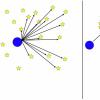[...]
Rapamycin (and probably berberine) seem tohave more direct beneficial effect of stem cells but lowering SASP does seem to perk them up.
All that said, D is hard to get and its side effects make you feel washed out while you take it (my experience was 3 days at 60mg once a day with 1000 mg Q and 1500 mg F). Rapamycin is even worse with reports of mouth sores, eye sores, deep acne and mild sexual dysfunction in the R thread.
Now the good news. Theaflavin also targets the BCL-2 path way like D and Berberine targets mTOR1 like R, both without side effects. Fisetin is an effective senolytic agent in 20mg/kg (1500mg-ish) all by itself and synergizes with D and T.
I've been slowly adjusting my stack and am planning my next run to be 3000 mg liposomal F, 1000mg Q, still looking for dosing guidance on T but probably in the 1000-2000mg range, 1000mg berberine with chocolate (adds emulsified oil and lecithin - and taste),10mg bioperine and 400mg bromalin to aid absorption. (60, M, 6'2", 180lbs, good general health, good diet and exercise) I recommend not doing other things while doing these and I do a run for 2-3 days and then take off a minimum of two weeks, though many (like the Mayo clinic trial) run every week - 2 on 5 off, but just fisetin. My research has shown that chronic administration eventually seems to start causing undesirable side effects which might be tolerable if one was treating a specific disease, but not for what I need as the acute dosing seems to lead to durable effects without side effects.
Hope this was useful.
Thanks again, DJSwarm. As to the beneficial effects of Rapamycin on stem cells: do you suggest a combination of for example of Rapamycin (or potentially Berberine, as seems to have your preference), with SC-removal may be 'more optimal'. And how would you suggest combining the two?
I just found a publication that may be interesting with this regard: "Finally, rapamycin and other compounds have been demonstrated to have significant senotherapeutic effects (i.e. selective ability to restore or eliminate senescent cells) [5,6]. Many senotherapeutic drugs have minimal side effects and are effective with transient dosing. For example, at our clinic we routinely study the senotherapeutic drug fisetin, a phytonutrient with potent senolytic ability, and are conducing multiple randomized trials for its use in the context of osteoarthritis, an age-related pathology. Not only has rapamycin has been demonstrated to reduce senescence in MDSCs by our group [5], but others have demonstrated that blocking mTOR reduces stem cell senescence and associated secretory phenotypes [3,7]. In orthobiologic applications, the use of senotherapies like rapamycin is very compelling to reduce the anti-regenerative senescent profile of autologous stem cell therapies like bone marrow concentrate in various orthopedic indications." https://www.ncbi.nlm...les/PMC7467370/
It makes me wonder if one may not first start to use Rapamycin for a while (intermittent dosing seems common with this regard, as recommended by Dr. Green), before adding in the senolytics in a hit-and-run-fashion?
As to using liposomal Fisetin. I thought of simply mixing fisetin and Theaflavin with lecithin in a high speed blender. I remember a thread at Longecity where a patent was discussed that claimed that even without using ultrasonication this would result in the formation of liposomes. (Albeit I still have a ultrasonic cleaner I once bought for this purpose, but never used).
I know studies have confirmed bioperine could increase absorption, but could I ask how you came to the conclusion that bromalin may aid absorption?
And in case I missed it, were there any studies posted that confirm the senolytic properties of apigenin?
Sorry for the many questions, but do you suggest adjusting the dose of Fisetin and Theaflavin based on weight? (I also ask since my weight is about half of your weight).
Edited by Moondancer, 18 January 2022 - 03:13 PM.




















































